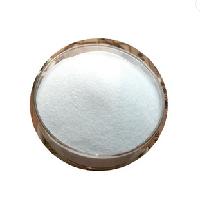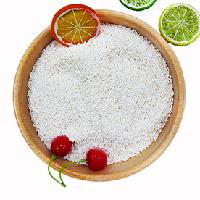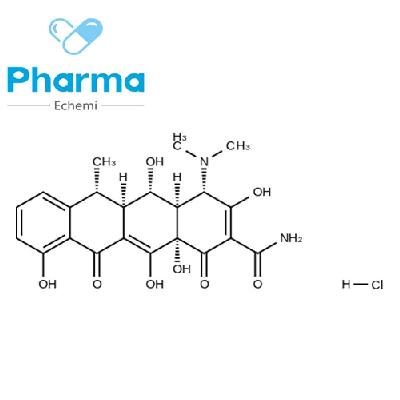-
Categories
-
Pharmaceutical Intermediates
-
Active Pharmaceutical Ingredients
-
Food Additives
- Industrial Coatings
- Agrochemicals
- Dyes and Pigments
- Surfactant
- Flavors and Fragrances
- Chemical Reagents
- Catalyst and Auxiliary
- Natural Products
- Inorganic Chemistry
-
Organic Chemistry
-
Biochemical Engineering
- Analytical Chemistry
-
Cosmetic Ingredient
- Water Treatment Chemical
-
Pharmaceutical Intermediates
Promotion
ECHEMI Mall
Wholesale
Weekly Price
Exhibition
News
-
Trade Service
The paint is stored under the specified conditions for a stable period of time.
4.
Principle
Put the sample in a closed container and place it under natural conditions or high-temperature acceleration conditions.
After storing it for a specified time, test the gel phenomenon, sedimentation, viscosity change and other tests required according to the product regulations.
Performance changes.
5.
Instruments and equipment
5.
1 Drying box: a blast drying box that can be kept within ±2°C of the specified or agreed temperature.
5.
2 Wide-mouth bottle: a ground-necked brown transparent wide-mouth glass bottle with stopper, with a volume of 250mL.
5.
3 Metal cans: standard gland metal paint cans, with a volume of about 400mL and a height of no more than 100mm.
5.
4 Sphere: Glass or ceramic sphere with a diameter of ≥7mm and ≤10mm.
5.
5 Stopwatch: The division value is 0.
1s.
5.
6 Viscosity meter: coated-4 viscosity cup, coated-1 viscosity cup, rotary viscometer or other suitable viscometer.
5.
7 Balance: the accuracy is 0.
01g.
5.
8 Adjusting knife: Adjusting knife for lacquer, about 100mm in length, about 20mm in width, and about 30g in weight.
6.
Sampling
The product is sampled according to GB/T3186, or it can be sampled according to the agreed method, and the sampling amount is determined according to the inspection needs.
7.
Test procedure and result evaluation
7.
1 Varnish test procedure and result evaluation
7.
1.
1 Preparation and storage of samples
Take 1 sample and put it into a wide-mouth bottle (see 5.
2).
The amount of sample should be about 15mm away from the stopper of the bottle with the liquid level of the sample.
Add 1 sphere (see 5.
4) to the jar, and then stop it tightly.
And weigh the sample mass (accurate to 0.
01g).
Choose to do natural storage stability test [test temperature (23±2)℃, test to the specified time] or high temperature accelerated storage stability test [test temperature (50±2)℃, test to the specified time, and then (23±2) ℃ placed for 24h].
Note 1: Weigh the mass of the sample after storage for the specified time.
If the difference between the mass of the sample before storage is greater than 1%, it can be considered that the container is not tightly closed, and its performance test results are doubtful.
Note 2: For special systems (such as the viscosity is too large and the sphere does not move in the initial sample), other performance changes can be tested according to the agreement of the relevant parties.
Note 3: The test temperature can also be other temperatures agreed by the relevant parties.
7.
1.
2 Inspection and evaluation of gel phenomenon
Test to the specified time, do not open or invert the jar, slowly tilt the jar about 30? to check the degree of gelation of the sample by observing the movement of the sphere.
The sphere does not move or moves slightly, and the result is judged as complete gel.
All trials are over.
If the sphere moves, check and evaluate the particles and rubber blocks according to 7.
1.
3.
7.
1.
3 Inspection and evaluation of particles and rubber blocks
Filter the test sample with a filter screen of 75μm or the agreed pore size, and observe the particles or glue blocks on the filter cloth.
According to the following six levels:
——10: No gel at all;
——8: almost no gel;
——6: A small amount of gel;
——4: Medium amount of gel;
——2: A large amount of gel;
——0: Completely gelled.
7.
1.
4 Inspection and evaluation of viscosity change
If the evaluation level of particles and rubber blocks is greater than or equal to 6, test the viscosity of the filtered sample according to the provisions of GB/T1723-1993 or GB/T9751.
1-2008, and the test temperature is (23±0.
2)℃.
Use formula (1) to calculate the viscosity change value t, expressed in %.
------(1)
Where:
v1——The viscosity of the sample after storage;
v0——The original viscosity of the sample before storage.
According to the viscosity change value, it is evaluated according to the following grades:
——10: less than or equal to 5%;
——8: greater than 5%, less than or equal to 15%;
——6: greater than 15%, less than or equal to 25%;
——4: greater than 25%, less than or equal to 35%;
——2: greater than 35%, less than or equal to 45%;
——0: greater than 45%.
7.
2 Color paint test procedure and result evaluation
7.
2.
1 Preparation and storage of samples
Take 1 sample and put it into a metal can (see 5.
3), load the sample with the sample liquid level about 15mm away from the can mouth, then close the can with the lid, and weigh the sample mass (accurate to 0.
01g).
Choose to do natural storage stability test [test temperature (23±2)℃, test to the specified time] or high temperature accelerated storage stability test [test temperature (50±2)℃, test to the specified time, and then (23±2) ℃ placed for 24h].
Note 1: Weigh the mass of the sample after storage for the specified time.
If the difference between the mass of the sample before storage is greater than 1%, it can be considered that the container is not tightly closed, and its performance test results are doubtful.
Note 2: For special systems (such as high-viscosity systems), other performance changes can be tested according to the agreement of the relevant parties.
Note 3: The test temperature can also be other temperatures agreed by the relevant parties.
7.
2.
2 Inspection of gel phenomenon
After the test reaches the specified time, open the lid of the metal can, probe the bottom with a knife (see 5.
8), and observe whether it starts to gel.
If it is completely gelled, the result is judged to be completely gelled, and all tests are over.
7.
2.
3 Inspection and assessment of settlement
Without shaking or shaking the container, drop the adjustable knife (see 5.
8) vertically at the center of the metal can mouth, and determine the degree of settlement of the sample by the degree of knife settlement.
If the pigment has settled and formed a hard lump at the bottom of the container, pour the suspended part of the upper liquid into another clean container and store it for later use.
Stir the pigment block with a knife to disperse it, add a small amount of the spare liquid poured out, re-mix and disperse, and stir evenly.
Then add the poured spare liquid one after another and stir and mix until the pigment is re-mixed and dispersed to form a uniform paint suitable for use, or it has been determined that the pigment block cannot be re-mixed and dispersed into a uniform paint by the above operation.
According to the following grades:
——10: The pigment is completely suspended, and there is no change compared with the original state of the colored paint;
——8: There is a clear sense of sedimentation and a small amount of deposited pigment on the knife.
There is no obvious resistance when the knife is moved with the knife, and the color paint can be easily remixed evenly;
——6: The pigment block with obvious sedimentation can pass through the pigment block and fall to the bottom of the container by the weight of the adjusting knife.
There is a certain resistance to the movement of the adjusting knife surface, and the agglomerated part of the block can be transferred to the adjusting knife.
, But the paint can be easily remixed to a uniform state;
——4: The self-weight of the adjusting knife cannot fall to the bottom of the container.
The adjusting knife passes through the paint block, and then it is difficult to use the adjusting knife surface to move.
Moreover, there is slight resistance when the adjusting knife blade is moved along the side of the tank, but it can be easily moved.
The state where the paint is re-mixed evenly;
——2: When the adjustment knife penetrates the pigment sedimentation layer by force, it is difficult to use the adjustment knife surface to move.
There is obvious resistance when the adjustment knife edge is moved along the side of the tank, but it can be remixed into a uniform state;
——0: Formed into very hard lumps.
These hard lumps and the liquid cannot be remixed into a uniform color paint within 5 minutes by manual stirring.
7.
2.
4 Inspection and evaluation of particles and rubber blocks
After the test to the specified time is stirred and dispersed evenly (according to the agreed stirring method if requested by the customer), filter it with a filter of 150μm or the agreed pore size, and observe the particles or rubber blocks on the filter cloth.
According to the following six levels:
——10: No gel at all;
——8: almost no gel;
——6: A small amount of gel;
——4: Medium amount of gel;
——2: A large amount of gel;
——0: Completely gelled.
7.
2.
5 Inspection and evaluation of viscosity change
If the evaluation level of particles and rubber blocks is greater than or equal to 6, test the viscosity of the filtered sample according to the provisions of GB/T1723-1993 or GB/T9751.
1-2008, and the test temperature is (23±0.
2)℃.
Use formula (1) to calculate the viscosity change value t, expressed in %.
According to the viscosity change value, it is evaluated according to the following grades:
——10: less than or equal to 5%;
——8: greater than 5%, less than or equal to 15%;
——6: greater than 15%, less than or equal to 25%;
——4: greater than 25%, less than or equal to 35%;
——2: greater than 35%, less than or equal to 45%;
——0: greater than 45%.
8.
Test report
The test report should include the following:
a) Indicate the name and standard number of this standard;
b) The specification and name of the test product, such as varnish or paint;
c) Storage temperature and time;
d) Test results after storage test;
e) Test date.
(Source: Global Coatings Network) (For more information, please log in: Global Coatings Network http:// )
http://







